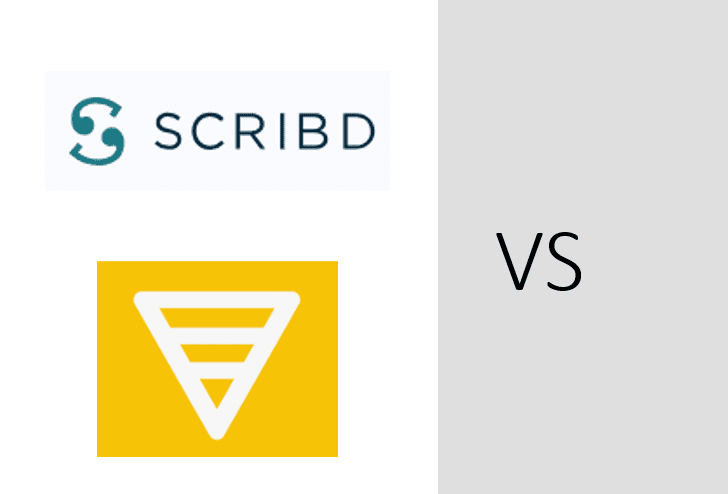Gain More Out Of Free Time: 61+ Productive Things To Do

It’s always when I’m not expecting to suddenly have a few minutes of free time that I find myself thinking, “What are some productive things I could be doing right now?”.
Like when my friend canceled our lunch date last minute. I had a few hours carved out for catching up and then suddenly those hours were wide open. I was definitely disappointed at first, but then I saw it as a gift of time for myself and some productivity.
These surprise pockets of time are like little gems that hold immense potential for self-improvement and personal growth. In our digital era, where time often seems to slip through our fingers, mastering the art of making the most of these moments can really elevate your productivity.
So, how do we transform these unforeseen gaps in our schedule into time well spent?

This guide will walk you through a variety of productive things to do tailored to different aspects of life, such as personal development, health, family, and professional growth. Let’s turn that unexpected free time into a pathway toward a more productive, balanced, and fulfilling life.
A Comprehensive List of Productive Things To Do
Let’s dive into our curated collection of activities, each designed to enrich different facets of your life:
Personal Development
Learning something new or acquiring a new skill will enrich your life and broaden your horizons, opening doors to fresh perspectives and opportunities. Each activity in this category is designed not just to fill time but to contribute meaningfully to your journey of self-improvement and self-discovery.

1) Learning a New Skill or Language
In an era where knowledge is just a click away, taking advantage of an online course to learn a new skill or language can be incredibly rewarding. Not only does this boost your cognitive abilities, but it can also enhance your career prospects and personal satisfaction. Whether it’s coding, digital marketing, or learning a new language, there are numerous platforms to explore:
- Coursera: Offers comprehensive courses in subjects like business and computer science, partnering with universities for in-depth material and certification.
- Udemy: Features a wide variety of topics ranging from web development to personal wellness, with flexible course structures.
- Duolingo: Provides a fun and engaging platform for learning languages, from Spanish to Japanese, great for beginners.
- Skillshare: Focuses on creative fields such as illustration, photography, and creative writing, ideal for those looking to explore their artistic side.
- Khan Academy: Known for its strong emphasis on academic subjects such as mathematics and science, perfect for students or lifelong learners wanting to deepen their academic knowledge.
2) Vision Board Creation
A vision board is a potent tool for setting goals and staying motivated. It involves gathering images, quotes, and symbols that resonate with your aspirations and desires, forming a visual mosaic of your future ambitions. This is an inspiring yet also practical process for keeping your goals visible and constantly reminding you of what you’re working towards. Here are five creative ways to craft your vision board:
- Digital Vision Board as Desktop Wallpaper: Create a digital vision board using graphic design tools or apps like Canva and PicMonkey. Once completed, set it as your desktop wallpaper. This way, every time you open your computer, you’re greeted with a visual reminder of your goals, keeping you focused and inspired throughout the day.
- Using AI Tools : Leverage the power of AI tools such as Midjourney to create highly detailed and specific visualizations for your vision board. These tools can help turn your abstract goals into vivid, concrete images, making your vision board more impactful. You can either print these images for a physical board or include them in your digital version.
- Vision Board Workshop with Friends and Neighbors: Host a vision board party or workshop with friends and neighbors. This can be a fun and social way to work on your vision boards, sharing ideas and inspirations. It’s also a great opportunity to bond over shared goals and dreams, and you might just find the accountability partners you need in your journey.
- 3D Vision Board with Physical Objects: Instead of just pictures, incorporate three-dimensional objects into your vision board. This could be small items that symbolize your goals, like a miniature globe for travel aspirations or a small mock-up of a house for your dream home. The tactile experience of a 3D vision board can make your goals feel more tangible.
- Interactive Vision Board with QR Codes: Create an interactive vision board by adding QR codes that link to motivational videos, podcasts, or articles related to your goals. Scanning these codes can provide an instant motivational boost or new insights, keeping your journey dynamic and engaging.
3) Reading and Joining a Book Club:
Immersing yourself in a good book can be a magical experience, offering both an escape and a chance to grow. But joining a book club can elevate this experience, opening doors to new perspectives and friendships. Here are various types of book clubs you might consider joining or starting:
- Genre-Specific Book Clubs: These clubs focus on specific genres, such as mystery, science fiction, historical fiction, or romance. Perfect for readers who have a strong preference for a particular type of story.
- Literary Classics Book Club: Dedicated to reading and discussing classic literature. This type of club is great for those who want to catch up on all the timeless books they’ve missed or revisit old favorites.
- Non-Fiction Book Club: Focuses on non-fiction books, covering topics like history, science, self-help, or biographies. Ideal for those who love learning about real-world events, facts, and life stories.
- Virtual Book Clubs: These online clubs are perfect for those who prefer the convenience of connecting with fellow readers via the internet. Websites like Goodreads or online communities on social media platforms offer various groups dedicated to different reading interests.
- Local Community or Library Book Club: Many local libraries or community centers host monthly book clubs. These are great for meeting people in your area and can offer a diverse range of book selections.
4) DIY Projects and Wall Art
Engaging in DIY projects can be a fantastic way to use spare time productively, especially when these projects are simple and functional. Here are a few easy DIY ideas that won’t take more than an hour or two but will still add a unique and practical touch to your home and build your confidence with a “can-do” self-esteem boost:
- Magnetic Spice Jars: Create a set of magnetic spice jars to organize your spices in a fun and accessible way. Simply attach small magnets to the sides of small jars and stick them to a metal surface, like the side of your fridge. It’s a quick project that frees up cabinet space and adds a decorative element to your kitchen.
- Decorative Key Holder: Make a stylish key holder using a small wooden board, some decorative hooks, and paint. This simple project not only helps keep keys organized but also adds a personalized touch to your entryway.
- Jar Herb Garden: Start a small herb garden in your kitchen using jars. Plant herbs like basil, mint, or cilantro in jars, label them and place them on your windowsill. This project is quick, enhances your kitchen’s look, and provides fresh herbs right at your fingertips.
- Creating a Photo Wall Collage: Arrange your favorite photos in a creative collage on your wall. You can use a mix of family photos, travel snapshots, and inspiring images, arranging them in artistic patterns or shapes.
- Upcycled Picture Frames: Take old picture frames and give them a new lease of life with a coat of paint or by attaching decorative elements. You can use these refreshed frames to display art, photos, or even fabric swatches for a quick wall art solution.
5) Journaling and Self-Reflection
Journaling and self-reflection are vital practices for personal growth, offering a pathway to increased self-awareness, stress reduction, and overall happiness. Here are five insightful journal prompts to deepen your introspective practice:
- Future Letter to Yourself: Write a letter to your future self about your current hopes, dreams, and advice. This exercise helps you visualize your future and assess your progress when you revisit the letter later. Futureme.org will email the letter to you one year from the time you write it!
- Gratitude List: Each day, jot down three things you’re grateful for. This simple habit can transform your mindset, highlighting the positive aspects of your life and fostering a sense of well-being.
- Reflect on a Quote: Choose a quote that resonates with you and explore why it’s significant to you. How does it connect to your life or the challenges you’re facing?
- Overcoming Obstacles: Write about a recent challenge and how you dealt with it. This prompt is excellent for recognizing your strengths and learning from your experiences.
- Mindful Moments: Recall a moment when you felt fully present and describe it in detail. Consider what made this moment special and how you can incorporate more mindfulness into your daily routine.
Through these diverse activities, from learning new skills to engaging in creative DIY projects, you’re not only productively utilizing your time but also investing in yourself. Each step taken in these endeavors is a step towards a more enriched and self-aware life, embodying the essence of true personal development.
Health and Well-being
In the moments of unexpected free time, there lies a valuable opportunity to enhance our health and well-being. This section delves into productive things to do that are beneficial for both your body and mind and are also perfect for fitting into those spare hours.

6) Exercise and Physical Activity:
Integrating exercise and physical activity into your daily life is a productive way to enhance both mental and physical health. Finding the right type of exercise that fits into your schedule and resonates with your lifestyle can boost your productivity. Here are five efficient and effective ways to incorporate physical activity:
- Yoga for Focus: Practicing yoga can improve concentration and reduce stress, making it easier to stay productive throughout the day. Short yoga sessions, available on platforms like Youtube (Yoga with Adriene is a great channel to start with), can be fit into busy schedules, offering a quick way to reset and refocus.
- HIIT for Energy Boosts: High-intensity interval Training (HIIT) is perfect for those looking for a quick, high-energy workout. Sessions can be as short as 15 minutes and are known to boost energy levels, which can lead to increased productivity. Check out Fitness Blender for a range of quick HIIT workouts.
- Jogging for Mental Clarity: A brisk jog, especially outdoors, can clear the mind and improve cognitive function. This makes jogging an excellent choice for those looking to enhance their mental productivity. Even a short jog during a lunch break can rejuvenate the mind for the rest of the day.
- Dance Fitness for Creativity: Engaging in dance fitness not only improves physical health but can also spark creativity. The combination of music and movement, as seen in The Fitness Marshall‘s workouts, can be a fun way to break the monotony and get the creative juices flowing.
- Strength Training for Endurance: Regular strength training builds physical endurance, which translates to longer-lasting energy and stamina in daily tasks. Bodyweight exercises or short free weight routines, guided by channels like HASfit, can be done quickly and effectively at home.
7) Meal Planning and Prepping:
Effective meal planning and prepping is a great strategy to maximize productivity in your daily life. By organizing your meals in advance rather than making decisions while your grocery shopping, you not only save time but also ensure a healthier diet. Here are some ideas to make your meal plan simpler and more efficient:
- Theme-Based Meal Plan: Assign each day of the week a specific theme, like ‘Meatless Monday’ or ‘Fish Friday.’ This can add variety to your weekly meals.
- Batch Cooking: Cook in large batches and portion a few meals for the week. This approach is especially productive for busy weeks, as it minimizes daily cooking time and you buy fewer ingredients when you go grocery shopping.
- Use of an Air Fryer: Incorporate an air fryer into your cooking routine to make meals faster and healthier. Air fryers are great for quick meals like roasted vegetables, chicken, or even homemade sweet potato fries, saving time while reducing the need for oil.
- Pre-Cut and Pre-Packaged Ingredients: Utilize pre-cut vegetables or pre-marinated meats to save prep time. Though slightly more expensive, they can be a great time-saver during hectic periods.
- One-Pot Meals: Focus on recipes that can be cooked in a single pot or pan. This approach simplifies both the cooking and cleaning process. Dishes like stews, casseroles, or one-pot pasta are not only time-efficient but also minimize kitchen cleanup, making your meal preparation more streamlined and manageable.
8) Meditation and Mental Health:
Taking time for meditation and mental health is not just a break from productivity; it’s an enhancement to it. By dedicating moments to be still and quiet the mind, you can actually amplify your productivity when engaging in other activities. Mindfulness and meditation help clear mental clutter, leading to sharper focus and improved efficiency in tasks.
- Guided Meditation Apps: Utilize apps like Audible, Headspace or Calm, which offer guided meditation sessions. These can range from short, 5-minute meditations to longer sessions, making it easy to find something that fits into your schedule.
- Breathing Exercises: Practice simple yet effective breathing techniques, such as the 4-7-8 breathing or box breathing. These can be done anywhere, and anytime you need a quick mental reset.
- Mindful Walking: Turn a regular walk into a mindful experience. Focus on the sensations of your feet touching the ground, the sounds around you, and your breath. This practice combines physical activity with mindfulness.
- Virtual Therapy Apps: Leverage the convenience of virtual therapy apps like Talkspace or BetterHelp. These platforms connect you with mental health professionals and offer a flexible way to access therapy and counseling services from the comfort of your home. Engaging in regular therapy sessions can provide valuable insights and coping strategies, enhancing mental well-being and indirectly boosting productivity by improving your overall emotional health.
- Mindfulness Bells: Set periodic reminders or ‘mindfulness bells’ on your phone or computer. When you hear the bell, pause for a moment to check in with yourself, observe your surroundings, and take a few deep breaths.
9) Doctor or Dentist Checkup:
It’s easy to let routine health checkups slide when our schedules are so busy. However, these appointments are crucial for preventative health care. Use some unexpected free time to schedule a visit to your dentist or doctor. Regular checkups can help catch health issues early, when they are often easier to treat, and are key to maintaining long-term health. Here are some practical tips to make scheduling and attending these checkups more manageable:
- Set Reminders: Use digital calendars or reminder apps to set notifications for scheduling and attending checkups. This ensures you don’t forget to book appointments and keeps you on track with your health routine.
- Utilize Telehealth Services: For minor concerns or follow-ups, consider using telehealth services. Many healthcare providers now offer virtual consultations, which can save time while still addressing your health needs.
- Combine Appointments When Possible: Try to schedule multiple checkups on the same day or in the same week to minimize disruption to your routine. For instance, a dental cleaning and a general health screening could be arranged close together.
- Regular Screening Tests: Stay informed about the recommended screening tests for your age and risk factors. These could include blood pressure checks, cholesterol level tests, mammograms, or prostate exams.
- Health Apps for Records: Keep track of your medical records and upcoming appointments using health apps. This can help you stay organized and make it easier to share important health information with your healthcare providers.
10) Nature Walks and Outdoor Activities:
Engaging in nature walks and outdoor activities is a rejuvenating way to enhance both mental and physical well-being, proving to be some of several productive things to do outdoors. The connection with nature, fresh air, and physical movement all contribute to a healthier lifestyle. Here are some ideas to make the most of your time outdoors:
- Guided Nature Hikes: Participate in guided nature hikes available in local parks or nature reserves. These hikes often provide educational insights about the local flora and fauna, adding an enriching element to your exercise.
- Biking Trails: Explore local biking trails. Whether it’s a scenic countryside route or a dedicated urban bike trail, cycling is a great way to cover more ground, get a good workout, and enjoy the outdoors.
- Park Leisure Walks: Take leisurely walks in a nearby park. This simple activity is accessible and can be a peaceful way to clear your mind, enjoy the surroundings, and get gentle exercise.
- Outdoor Yoga or Tai Chi: Practice yoga or Tai Chi in an outdoor setting. The tranquility and beauty of nature can enhance the experience, providing a serene backdrop for mindfulness and physical balance.
- Bird Watching: Try bird watching as a meditative outdoor activity. It encourages stillness, patience, and a deep appreciation for nature’s details, offering both a calming and educational pastime.
Utilizing free time to boost your health and well-being is one of the most productive choices you can make. Whether it’s a quick workout, a meal prep session, or a moment of meditation, each of these activities is designed to maximize the value of your free moments.
Family and Memories
In the hustle and bustle of daily life, taking time to foster family connections and preserve memories is a truly productive endeavor. These activities offer creative and meaningful ways to strengthen family bonds and celebrate shared experiences.

11) Creating Physical Photo Albums
In an age where most of our memories are stored digitally, taking the time to create physical photo albums is a wonderfully productive and meaningful activity. It allows you to not only organize your memories but also relive and share them with others. Here are five creative and productive approaches to creating physical photo albums:
- Themed Albums: Organize your photo albums based on themes like vacations, birthdays, anniversaries, or significant life milestones. This thematic approach adds a narrative structure to your albums, making them more engaging and easier to navigate.
- Yearly Albums: Make it a yearly tradition to compile an album that encapsulates the year’s best moments. This not only helps in organizing your photos systematically but also creates a chronological record of your life and family growth.
- Scrapbooking: Combine your photos with scrapbooking. Include ticket stubs, postcards, and handwritten notes alongside your pictures. This adds context to the photos and turns your album into a more detailed storybook of your life’s adventures.
- Digital Tools to Physical Album: Utilize online services that allow you to design your photo album digitally and then have it printed. Tools like Shutterfly or Mixbook offer customizable templates and easy uploading of your digital photos.
- Family Photo Album Creation Day: Dedicate a day where the whole family gets together to work on photo albums. It’s a great way to bond and allows everyone to contribute their favorite memories and stories.
12) Organizing Family Trees:
Organizing family trees is a productive and enriching way to connect with your heritage and learn about your ancestors. This activity not only enhances your understanding of your family’s history but can also be a fascinating journey of discovery. Here are five ways to make the most of this activity to preserve family memories:
- Use Online Genealogy Platforms: Leverage tools like Ancestry.com or MyHeritage, which can help trace your family history through public records and DNA testing. These platforms make it easier to piece together your family tree and discover distant relatives.
- Create a Visual Family Tree: Design a visual representation of your family tree. This can be a creative project where you draw the tree and add photos and names of family members. It’s a great way to visually document your lineage.
- Interview Older Relatives: Speak with older family members to gather stories and information. Record their memories and anecdotes, which can provide a richer and more personal view of your family history.
- Family Tree Scrapbook: Combine the family tree with a scrapbook. Include photographs, letters, and other memorabilia alongside the family tree. This scrapbook can then become a cherished family heirloom.
- Host a Family History Day: Organize a day where family members come together to share what they know about the family history. Everyone can contribute with their own research, stories, or artifacts they have.
13) Spending Quality Time with Family Members:
Utilizing your free time to engage in meaningful activities with your family is not only a productive use of time but also crucial for strengthening family bonds and creating lasting memories. Here are five enjoyable and productive ways to spend quality time with your family:
- Board Game Nights: Organize regular family board game nights. Choose games that are suitable for all ages and can engage everyone. This is a fun way to foster teamwork, strategic thinking, and healthy competition.
- Family Gardening Project: Start a small family garden. Whether it’s a flower bed or a vegetable garden, this activity can teach responsibility, patience, and the joy of nurturing growth. It’s also a great way to enjoy the outdoors together.
- Cooking a New Recipe Together: Pick a new recipe and cook together as a family. This is a great way to teach kids cooking skills and nutrition. Plus, it ends with everyone enjoying a meal they helped prepare.
- DIY Home Projects: Engage in simple DIY projects around the house. This could be redecorating a room, building birdhouses, or creating art for the home. It’s a productive way to enhance your living space while working together as a team.
- Family Exercise Routine: Create a family exercise routine, like a morning walk, a cycling adventure, or a yoga session. Exercising together not only promotes physical health but also provides an opportunity for bonding.
Through activities like creating photo albums, exploring family history, and spending quality time together, we transform spare moments into treasured memories and lasting bonds. Embracing these moments with loved ones turns time well spent into a priceless investment in our family’s story.
Professional Growth
Strategically utilizing your free time can lead to significant career advancements in the pursuit of professional development. This category is designed to help you make the most of these moments. From staying current with market trends to enhancing networking skills, each activity here is focused on enriching your professional skill set and expanding your career opportunities.

14) Market Research and Learning A New Project Management Tool:
In the realm of professional growth, using your free time to stay updated with market trends and learn new project management tools is exceptionally productive. This not only keeps you informed but also enhances your skills and capabilities in your field. Here are five ways to engage in market research and learn about the latest project management tools:
- Online Courses and Webinars: Utilize platforms like LinkedIn Learning, Coursera, or even industry-specific webinars. These online course resources often cover the latest trends and tools in various industries, providing you with up-to-date knowledge and skills.
- Industry Reports and Journals: Read industry reports and professional journals regularly. Websites like Harvard Business Review or industry-specific publications and newsletters can provide valuable insights into market trends and innovations.
- Networking with Industry Professionals: Engage in networking, either through online platforms like LinkedIn or at local industry events. Discussions with peers can provide firsthand insights into emerging trends and effective tools being used in the field.
- Trial and Evaluation of New Tools: Actively seek out and trial new project management tools. Many tools offer free trials or demo versions. Testing them in real-time can provide practical knowledge of their functionality and suitability for your needs. This could just be the upgrade your old-school to-do list is waiting for.
- Feedback and Case Studies: Look for case studies or feedback on the use of different project management tools within your industry. YouTube is a wonderful resource for this. Learning from others’ experiences can be a shortcut to understanding the benefits and drawbacks of various tools.
15) Networking Events and Building Connections:
Effective networking is a cornerstone of professional growth. Using your free time to attend networking events, whether virtual or in-person, can be a highly productive way to build and strengthen professional connections. Here are five productive strategies for networking and building connections in your field:
- Join Industry-Specific LinkedIn Groups: Participate in LinkedIn groups related to your industry. Engage in discussions, share insights, and connect with professionals who share your interests and can provide valuable career advice or opportunities.
- Attend Virtual Webinars and Conferences: With many events now online, attending virtual webinars and conferences has never been easier. These events often offer opportunities to connect with speakers and attendees from around the world, expanding your professional network.
- Local Networking Events: Look for local networking events, meetups, or industry-specific gatherings. These events can provide a more personal way to build connections and often lead to meaningful professional relationships.
- Volunteer for Industry Conferences: Offering to volunteer at industry conferences or events can be a great way to network. It provides a unique opportunity to meet organizers, speakers, and attendees, while also contributing to the industry community.
- Alumni Networking Events: Utilize your alma mater’s alumni network. Many universities and colleges host networking events for their alumni, which can be a valuable resource for connecting with professionals in your field.
16) Time Tracking:
Effective time management is a key component of professional growth. Utilizing time-tracking tools can greatly enhance your work efficiency by helping you manage tasks more effectively. Here are some productive ways to incorporate time tracking into your routine:
- Utilize Time-Tracking Apps: Apps like Toggl or RescueTime offer an easy way to track how much time you spend on various tasks. This can help you identify areas where you’re spending too much time and adjust accordingly.
- Set Specific Time Goals for Tasks: Allocate specific time blocks for different tasks and use a timer to stick to these limits. This method, often referred to as the Pomodoro Technique, can improve focus and prevent burnout.”https://www.youtube.com/embed/mNBmG24djoY?si=qRS3j9bVVwuc6nwp” t
- Analyze and Adjust: Regularly review your time-tracking data to understand your work patterns. Use this analysis to make informed adjustments to your schedule, ensuring you’re allocating your time most effectively.
- Integrate with Project Management Tools: If you use project management tools like Asana or Trello, integrate them with your time-tracking app. This helps in getting a comprehensive view of how much time different projects or tasks take.
- Time Tracking for Breaks: Don’t forget to track breaks and non-work activities. Understanding your downtime can be just as important for productivity and work-life balance.
17) Productivity Playlist:
Music can be a powerful tool to enhance concentration and productivity. Creating playlists tailored for focus can significantly boost your productivity in both personal and professional projects. Here are some ideas for crafting productivity-boosting playlists:
- Instrumental or Classical Music: Choose instrumental tracks or classical music, as lyrics can sometimes be distracting. Music by composers like Bach or Mozart, or genres like lo-fi beats, can provide a calming background.
- Nature Sounds: If music isn’t your preference, try playlists featuring nature sounds like rain, forest ambiance, or ocean waves. These sounds can be soothing and help improve concentration.
- Create Different Playlists for Different Tasks: Tailor your playlists to different types of tasks. For instance, high-tempo music for more dynamic tasks and mellow tunes for tasks requiring deep concentration.
- Utilize Music Streaming Services: Platforms like Spotify or Apple Music offer a wide range of pre-made productivity playlists. Explore and find the ones that suit your work style.
- Experiment with Sound Frequencies: Some people find certain sound frequencies, like binaural beats, to be effective in enhancing focus and creativity. Experiment with these to see if they work for you.
By embracing these strategies for professional growth, you turn spare moments into an investment in your future. Whether it’s through learning new tools, networking, or effective time management, each step taken is a stride toward achieving greater career success and satisfaction.
Conclusion
Now we can think of those unexpected free hours we sometimes stumble upon as more than just pointless gaps in our otherwise busy lives. They’re precious chances for us to grow, learn, and just be better. Whether it’s picking up a new hobby, getting healthier, spending time with our loved ones, or giving our career a little nudge, this list of productive things to do has shown us that there is plenty of opportunity to fill that time with something that will improve our lives.

And you know what? You don’t have to overhaul your life overnight. You also don’t have to wait for January 1st and New Year’s resolutions to make a change. Maybe today, you read a chapter of a book, and tomorrow, you try out a new recipe. Small steps, taken one at a time, pave the way to real change.
Think of this guide as a nudge to start seeing every moment as an opportunity- an opportunity to grow, smile more, and be a more awesome version of yourself.
Now, it’s over to you.
How do you turn a few minutes into rewarding and productive things to do? Got any personal tips or productive things you’ve done recently that gave you a sense of accomplishment? Drop a comment and let us all in on your secret – your story might just be the inspiration someone else needs.

If you’ve enjoyed this article and want more insights on self-improvement and making the most of every day, make sure to subscribe to our newsletter. Let’s keep exploring new ways to enhance our lives, step by step, together.
About the Author

With over five years in dental healthcare, Karen Nunez blends her professional expertise with a passion for personal growth. She encourages a balanced approach to living a fulfilled and enriching life; whether it’s through exploring new skills, fostering family connections, or career advancement.
Other Productivity / Tools posts that may interest you
- Productivity
- Book summary apps – Headway App vs Blinkist vs getAbstract
- AI Writers: / Blogging – Jasper, Writesonic, Article Forge , Copy AI, Anyword, Writecream, Copymatic, Quillbot, Peppertype, Jasper AI (pricing) &
- Work From Home tools: Jabra





